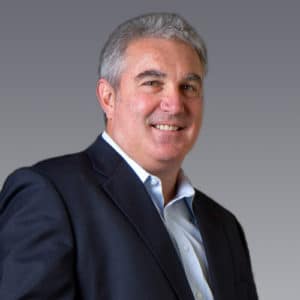
Jorge Titinger has always felt a connection to technology. The former president and CEO of Silicon Graphics International (SGI) and current strategic advisor to the executive vice president of the data center group at Hewlett Packard Enterprises (HPE) says he has felt the connection ever since he was a child. He was the boy who took apart his parent’s television and stereo to see how they worked. Even so, he continues to be amazed by the ongoing pace of innovation.
“When I was in college, the best way to communicate with my family was by long-distance telephone, but it was very expensive—so we used code words to keep the conversations as short as possible. Now we talk and have video on tiny wireless devices, sequence genomes and practice personalized medicine, all things that used to be science fiction,” he says.
Having experienced so many dramatic developments, Titinger is now part of the team leading SGI’s integration into HPE. Its recent acquisition greatly increases SGI’s marketing muscle by tapping into HPE’s extensive go-to-market infrastructure.
The integration is being guided by a comprehensive playbook and a program management office headed by SGI’s chief operating officer, Cassio Conceicao, and staffed with members from both companies’ leadership teams. In addition to key milestones and timeframes, the playbook focuses extensively on preserving positive customer interactions during the transition and achieving the anticipated cost synergies of the merger as quickly as possible.
“Having Conceicao leading the integration gives HPE important insights into SGI,” Titinger points out. “Combined with the well-thought-out and smoothly executed plan, the induction and engagement of one thousand people across the enterprise, and blending of our cultures has progressed extremely well.”
Titinger serves on a few corporate boards, both inside and outside technology industry. Although his position on the SGI board comes to an end in November, he believes having a company’s CEO on its own board of directors can be highly beneficial. That’s because the chief executive provides context and insight into daily operations and strategies to board members who only come together quarterly. This enables them to be more effective in representing shareholders and advising management.
“I want active dialogue with my board and for them to be able to ask hard, appropriate questions and test leadership assumptions. Once we agree, though, I want them to let me do my job and run the company. And if we can’t agree, part of their job is to replace me,” Titinger admits.
Board Snapshot
Silicon Graphics International (SGI), Board of Directors (term ends in November)
CalAmp, Board of Directors
Xcerra Corp., Board of Directors
Hispanic Foundation of Silicon Valley, Board of Directors
Stanford Children’s Hospital (Lucile Packard Children’s Hospital), Board of Directors
He is very much in favor of senior executives serving on outside boards as well. The outside company benefits from the individual’s expertise, while the executive expands their network and gains exposure to new perspectives on a variety of issues that
can be brought back to the home organization.
“As an outside board member, I can point out items that should be prioritized to someone with less experience in a given area. But I’ve always considered myself to be a student, so I can learn about other industries or approaches to challenges I wouldn’t know about otherwise,” he says.
SGI itself has benefitted from that kind of outside expertise. When it was transitioning from high-performance computing to analytics, it added board members from the new target markets and was able to gain valuable advice on everything from product positioning to changing sales language that would better suit the new customers.
Those conversations are not always easy to have. Titinger has been in situations where he had to point out that certain actions—like purchasing technology that was close to being obsolete or acquiring a competitor in a market that required multiple suppliers—would not produce the results the company expected.
As technology continues to drive and be driven by innovations at both SGI and HPE, Titinger is excited about advancements they can bring to areas that are important to him. “Among the reasons that HPE was attractive to me was their size, orientation to customers, and innovations that can have meaningful global impact in healthcare and education—areas I’ve always been passionate about,” he says.
Looking forward, he hopes to introduce some elements of Silicon Valley’s culture of innovation to Latin America and to tap the tremendous potential of the technology talent there. Closer to home, he also hopes to do more work to help improve the health and education of the Bay Area’s extensive and growing Hispanic community.
“In addition to what I’ve achieved professionally, if I can be an agent of change in these important areas, that would be tremendously fulfilling,” Titinger says.
 In the Director’s Seat With Esther Aguilera
In the Director’s Seat With Esther Aguilera
Esther Aguilera: Based on becoming CEO of SGI and your experience in big data analytics and high-performance computing, what are some of the most misunderstood technology applications or needs in the boardroom?
Jorge Titinger: Most companies could benefit by better educating their boards in what is possible by using technology applications more broadly. The first thing that comes to mind is the use of data analytics and predictive simulations to shed some light on particular problems or even help guide decisions about the future. The board should be aware of the company’s cybersecurity action plan and the assets that need to be protected. Lastly, understanding the role of social media in the go-to market area is something that could benefit many boards.
EA: You are one of the only Latino CEO of a large tech company in the Silicon Valley. Last November, SGI was acquired by Hewlett Packard Enterprise. What was the decision-making process for joining HPE?
JT: One of the key responsibilities of the Board is to maximize the return for the shareholders. In this particular case, SGI had excellent products but we lacked the go-to-market capability and size to gain significant market share at the pace that was necessary to convert the potential success into reality. The combination with HPE was a natural fit. They had over ten times the go-to-market capacity and deeper pockets to invest, not only in customer-facing programs, but also in R&D. After months of discussions, thorough assessments of all possible paths, and a rigorous diligence process, we reached an agreement that provided a nice premium for our shareholders, significant opportunities for our employees, and a combined company that could add more value to our customers. The combination with HPE was a win-win-win.

